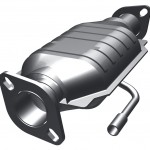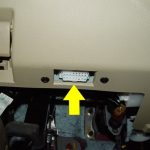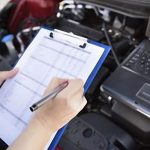When it comes to car care, you may not know everything. No owner knows everything, which is why it’s important to understand some simple things to help it drive longer.
When you purchase a new car, you don’t really picture it breaking down, or having a great deal of problems.
No one goes into purchasing a vehicle thinking about when it’s going to break down or cause any sort of issues. And yet, people still find themselves trapped, a few miles down the road because something has gone wrong.
Could emissions testing be part of the bigger picture? That’s something that analysts have been exploring for some time.
There are some common-sense elements that you may want to consider when caring for your car, and the following highlights just some of those things you should consider.
Wear and Tear Is Normal
No matter how you look at it, automobiles are not going to last forever.
No matter what you do, no matter how well you take care of the one you purchase, you’re going to have to deal with the wear and tear that occurs.
On day one, you don’t have to panic, but if you haven’t checked your car’s components in some time, you are going to want to consider wear and tear, and perhaps update several components.
From wires to spark plugs, any number of issues could manifest, and you need to be aware of what could lead to faster deterioration. That’s where testing, and even emissions can come into play.
Even though these things can break down, it’s important to realize that wear and tear is something that is normal, and is going to happen to every vehicle at one point or another, it’s just inevitable.
The Pollution Problem
Sometime during the 1970s and leading through the 1980s and now modern times, pollution started to be a big deal with politicians.
To the point where legalization was passed through major countries to force automobile makers to limit the emissions that a car could have.
Not only that, testing became far stricter, and registration could not be had without passing certain smog tests.
Pollution is a problem because it causes issues with the atmosphere, including smog, soot, dust, and darkness through a variety of different elements.
The pollution problem is the main reason why we have major efficiencies in engines today, and updates across several different auto types.
Emissions Testing In The Past
You may still see it sometimes, but testing in the past required testing of the gasses that were coming out of the exhaust pipe of a car.
A mechanic would literally test the exhaust while a car was running, and that would determine what the next course of action would be.
If the smog test was passed, that was it. If it didn’t, other elements would be tested to try and figure out what was going awry.
These tests have been updated, but there are some mechanics that may still prefer to go this route, especially for cars that were made before 1981.
Modern Testing
Modern emissions testing doesn’t require a mechanic to put anything in the exhaust pipe or test gasses in the traditional sense. Many options today can be read through on board diagnostic tools, and symbols that may be in the dashboard.
Computers take the course of action here, and mechanics simply read error codes that the cars can display through readers.
Once error codes are defined, a fix can be applied right away, making second guessing rare, and failing tests even more rare.
With modern testing, a vehicle can be tested for emissions, pass immediately or fail. When a car fails to pass, a mechanic can determine what is wrong within a matter of minutes, and apply the right fix to balance the issue out.
In most instances, this is not a costly option, but there are issues that can arise if there’s a serious problem.
When Cars Fail Emissions Tests
Here’s the kicker, sometimes, despite your best efforts, your vehicle may not pass this test. If it doesn’t, you may need to pay to get certain aspects of a car fixed.
That could include changing out catalytic converters, exhaust pipes, engine parts, transmission, fuel injectors, or just about anything that could be causing the issue.
If after a fix has been applied, the car still doesn’t pass, you’ll need to visit your local department of motor vehicles and figure out what the next step may be.
In the case of the United States, you’ll find that automobiles that fail more than once, could be given a waiver if the owner can prove that they’ve tried to fix things.
This includes investing money into a fix valued at $500 or more, depending on the state. Waivers are given on a case by case basis, but most vehicles will not need this at all.
Running The Most Efficient Way Possible
At the end of the day, you’re going to find that the biggest benefit to smog testing is in regards to efficiency. This includes gas mileage, and speed. Automakers have focused on optimal engine tuning, fuel injection, aerodynamics, and more. When your car is running at the proper levels, you’ll find that everything about it is going to be good.
But if things are going wrong, you’ll feel things take a turn. Speed may be hindered, you may sense sluggishness in the engine, and you may see smoke come out of the exhaust more often than not.
Without testing, your vehicle will fail to meet the efficiency standards that you expect.
At the end of the day, the best benefit of testing is peace of mind. You want to make sure that your car is able to be registered, running at top efficiency, and is not a liability.
Furthermore, if you don’t test and pass these tests every couple of years, your car could cost you a lot of money to fix.
When left alone, wear and tear will take over your vehicle and fixing things that have fallen apart could be more than the value of your vehicle. Don’t risk it, focus on testing annually or at least every 2 years.







It’s interesting to read that during the 1970’s and 1980’s, people started to put effort into cleaning up the air pollution. I was also surprised to read that mechanics don’t have to put anything in your exhaust pipe to test for gasses. After reading this, I should look into when I’m due to get my own car tested.